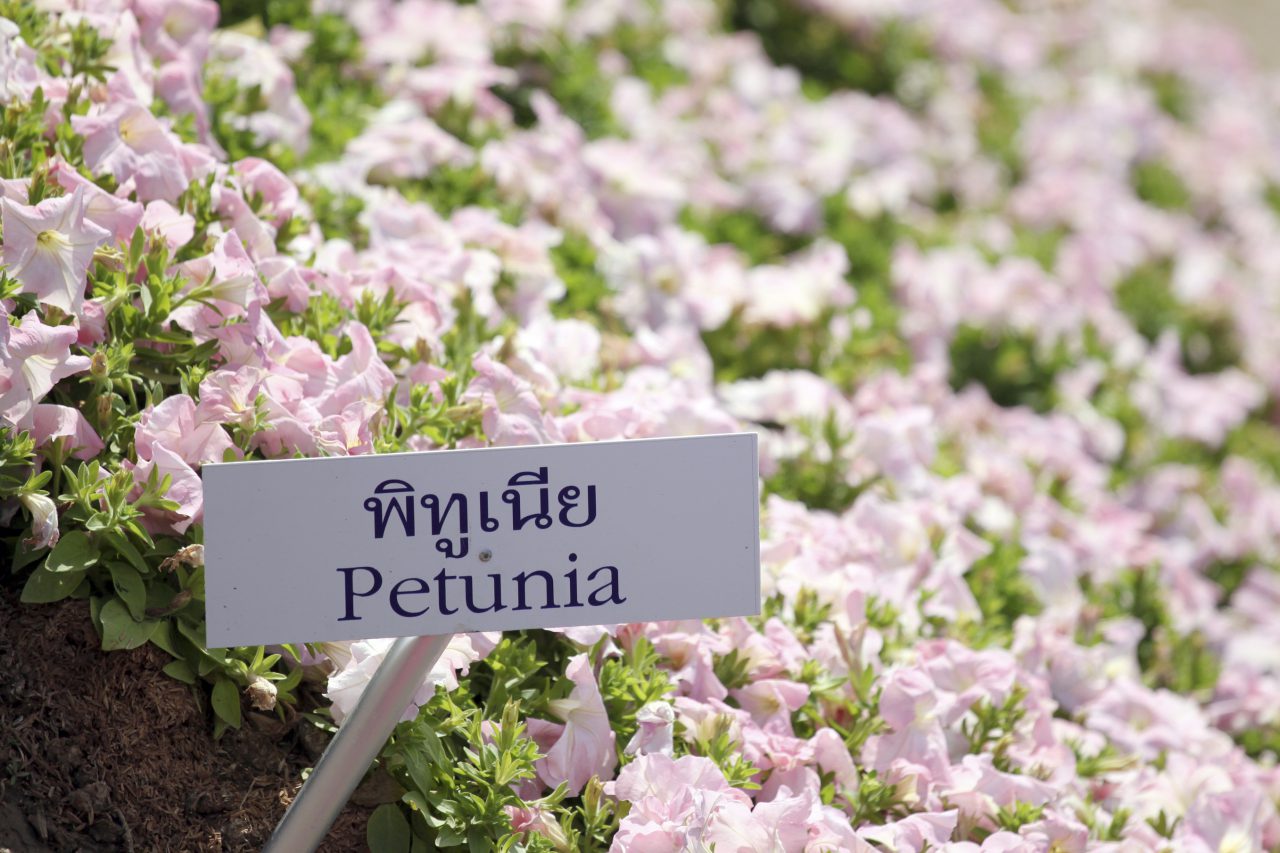Labeling plants in the garden is a bit like cleaning off your desk. The latter is necessary when you can no longer see the desk itself while the former is required when you can no longer identify the plants you have. Recently, as I was showing a friend my garden, she inquired as to the identity of a particular plant and I had to admit that I didn’t have a clue what it was.
Fall is a great time to label plants before many of them disappear for their yearly slumber. Years ago when I was trying to fill up the garden, I went on a daylily-buying spree, all purchased from one of my favorite daylily hybridizers, Jim Massey. It was hot and I was anxious to get them in the ground so consequently paid little attention to their names. The result was that several years later I found myself wanting more of one particular daylily—a daylily that was relatively slow growing so division wasn’t possible—and I had no idea what its name was. This was a bit like finding a needle in a haystack as the genus Hemerocallis has over 50,000 cultivars attached to it.
Another reason to label your plants is that some plants disappear over the winter. Calla lilies are there one day and gone the next—and I’m a great one for planting on top of a slumbering calla lily. The calla lily will reemerge and somehow always wins out, claiming its rightful space, undaunted by intruders. Right now I have a calla lily and a hybrid tea rose fighting for the same planting site so I shall move the rose. If only I had labeled the calla lily!
The third reason to label your plants is this: You will undoubtedly forget what plants you already own in your garden. You probably will look at your Euscaphis japonica—the Korean sweetheart tree—all summer, muttering its Latin name, but come the following spring you can easily draw a blank as to its name. For unaccountable reasons, I seem to be incapable of remembering the name of Styrax japonicus. Just now I had to look at the aluminum tag on one of its branches to refresh my elderly memory.
The main problem with plant labeling is that there isn’t a foolproof method to use. Sharpies, which stain clothes forever, are hopeless when confronted by the summer sun, soon fading into an unreadable mess. Pens made specifically for garden labels either streak or their tips are so thick that it’s impossible to fit the plant’s name on the label. These markings also fade, although they hang around a bit longer than the Sharpie markings.
Typically, plants come with an identification tag. These tags, placed neatly in the ground by the plant, don’t disintegrate—they simply get lost or buried. Some of these tags come with the names written in pencil, which is a surprisingly long-lasting method of marking. The trouble is that it’s impossible to write a label on a metal marker with a pencil.
Another alternative is to order markers that are engraved with the name of the plant; I’m sure this is what billionaires do, but forget it if you are a mere millionaire. These markers are incredibly expensive and if you have four hundred plants to label you probably will have to sell your house before ordering these engraved plant markers.
Once a master gardener suggested using white plastic knives as markers on the theory we could use the hilt for the name, while utilizing the blade to slide it into the soil. Filled with enthusiasm with this idea, I lugged home 500 plastic knives, which is probably more plastic knives than I could use in a lifetime. Soon I had a myriad of white plastic handles sticking up all over the garden with the plant names written in black garden ink. Gardens don’t improve in looks with many white plastic knives poking out of the soil but I was desperate to properly notate my plants.
All went well for exactly three months, as that’s how long it took for the plastic to become brittle and subsequently break. Now I had shattered plastic hilts scattered throughout the yard, which made no sense at all.
There are many different kinds of plant markers available and most of them are extraordinarily flimsy. A plant marker, I quickly learned, needs presence, needs to look as though it were serving a purpose. A plant marker that bends with the wind or light snow is not a plant marker worth its salt. I knew I needed a reasonably priced durable plant marker. The zinc markers on the market fit the bill, as they are sturdy with a matte finish. To my mind, copper markers are way too shiny. After all, I want people to notice the plant first and the plant label second.
This was my dilemma when I went with my friend, Jim Massey of daylily fame, to visit Sharon Yarbrough’s Ridgeville Daylily Garden. Her daylilies are magnificent and after amassing some of my favorite daylilies, such as ‘Megatron’ and ‘Big Bird’s Friend,’ I had to ask her about her daylily marking system.
Her husband bought hollow poles at the local big box store and cut them into one-foot lengths. She uses zinc markers (just google “zinc plant markers” and you will find them) that sit on top of two stakes. She then uses a handheld labeler filled with gardening tape containing extra adhesive to print out the name of the daylily. She inserts the two stakes into center opening of the foot-long pole, which she incorporates into the ground. And there, dear readers, you have a perfect plant marking system.
Of course it didn’t go easily for me in spite of my good intentions. I forewent the poles, figuring the stakes attached to the zinc markers could just go down into the soil in my garden. The label printing went well but I couldn’t figure how to attach the label to the zinc plant label: Where was the adhesive? How was I supposed to attach the label to the zinc marker? Feeling my age, I went to the nearest office supply store and the clerk (patiently) showed me how to fold the label in half lengthwise and gently peel the backing off. I seem to be the only person in the whole wide world who had no idea how to peel the backing off the label.
Will this new marking system work? I have high hopes that perhaps this time will be successful. As to the nameless plant I couldn’t identify in my garden, it is now in bloom and I am clueless as to what it is.









